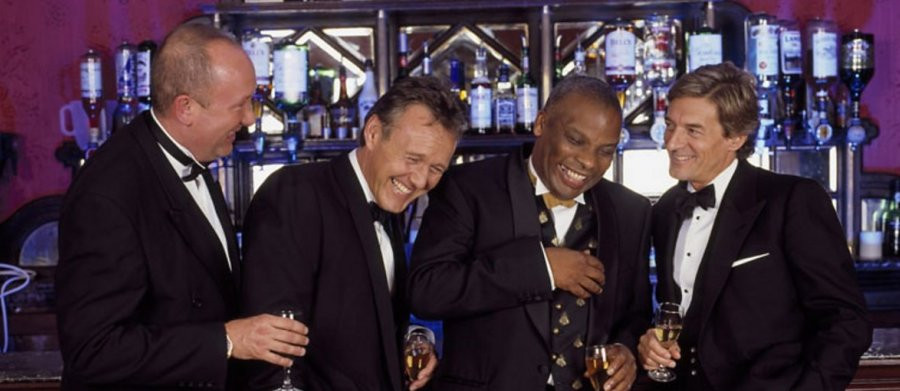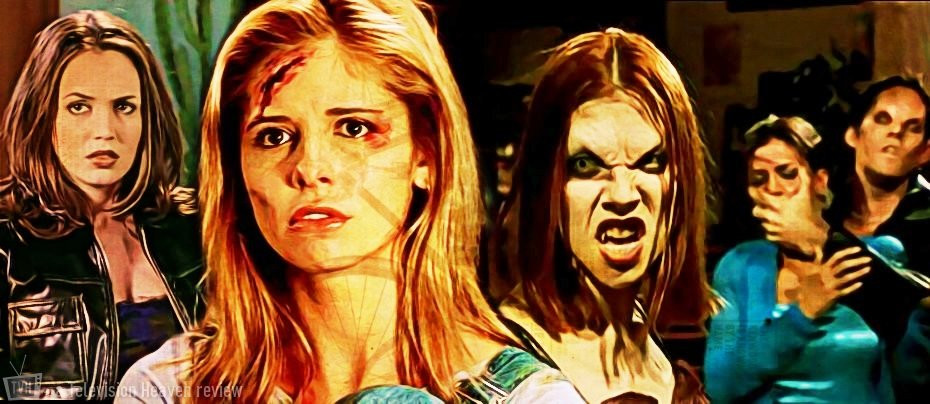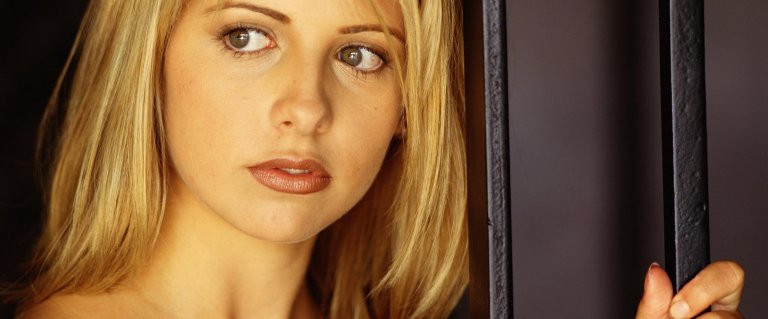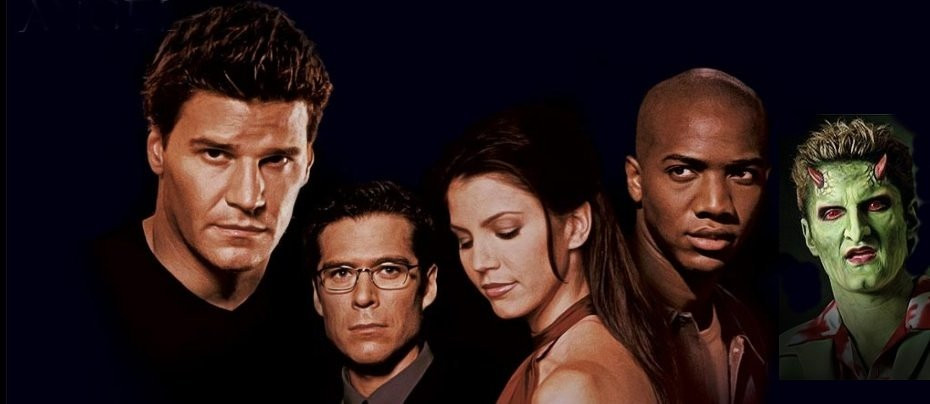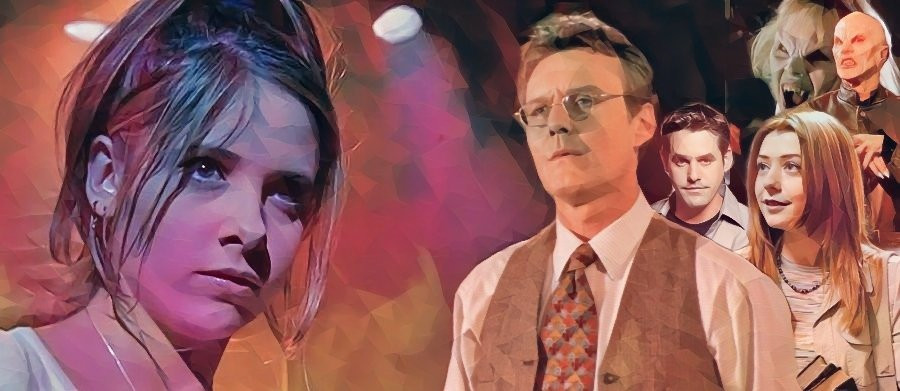
Buffy the Vampire Slayer - Season 1
Buffy the Vampire Slayer is one of the best-loved and most influential television series of the nineties and early noughties. Having revolutionised the telefantasy genre, it has had an enormous impact on fantasy series since, revitalising vampire fiction. It inspired numerous further productions, either in good faith or as clear attempts to cash-in on its success, and prompted swathes of academic discussion on its themes of feminism, the challenges of adolescence and young adulthood. It made stars of its ensemble cast and elevated its creator and showrunner, Joss Whedon, from a professionally respected but publicly unknown screenwriter to one of the best known and most sought after writer-directors in Hollywood. However, more recently, widespread allegations against Whedon's conduct on set, particularly claims of bullying by the series' female stars, have sullied his and the series' reputation.
In spite of this, Buffy remains a remarkable and endlessly watchable show, and the worrying insights into its production and Whedon's conduct shouldn't overshadow the amazing work by everyone else involved with the show. A television series is, after all, a huge and collaborative effort, and while Whedon's vision runs through the show, the series is not his alone. Indeed, the early history of the concept shows that it takes more than a scriptwriter with a solid idea to make a production work. The original version of Buffy the Vampire Slayer was a feature film released 20th Century Fox in 1992. Starring Kristy Swanson (The Phantom) as Buffy and the prolific and respected Donald Sutherland as her Watcher, the film was produced as a broad comedy against Whedon's wishes. Director Fran Rebel Kuzui (Tokyo Pop), while a good match for teen comedy, seems poorly suited for horror, and the film lacks bite, if you'll excuse the pun.
In spite of the film's poor performance and critical reception, the idea of a cheerleader-turned-vampire hunter was good enough to maintain studio interest. He was approached by executive Gail Berman, whose company Sandollar owned the television rights to the property, to turn it into a series pitch to sell to networks. On this basis a one-shot pilot episode was produced by his new company, Mutant Enemy, running to only twenty-five minutes, to sell the concept and begin putting the cast in place. While never officially released, the pilot has been heavily bootlegged and is easily found online. A simplified version of the first broadcast episode, "Welcome to the Hellmouth," it features most of the main cast of the series, with the notable exception of Willow, here played by Riff Regan rather than Alyson Hannigan. Principal Flutie, here played by Stephen Tobolowsky, was recast with Ken Lerner taking the role in the series (not that the character lived long in the event).
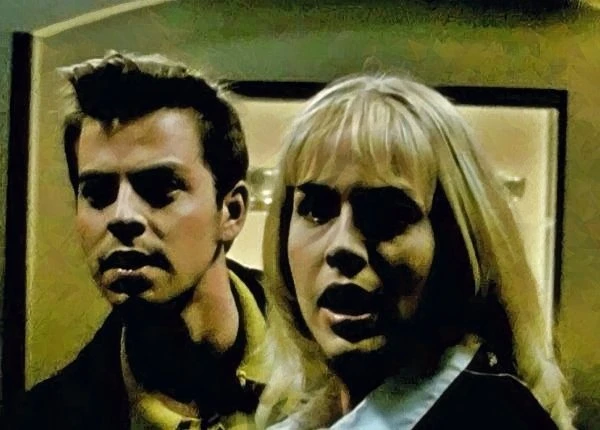
Like the film, the pilot isn't terribly good, but it has clear potential. The best part is the opening sequence, essentially identical to that of the broadcast episode, in which a teenaged boy breaks into a school to impress the pretty young blonde he's dragging around with him. She acts unnerved by the darkness of the after-hours halls, while he's brash and cocky. It's an old slasher movie trope, and from the outset the viewer is expecting someone or something to burst out and attack the couple – unless the boy turns out to be the attacker himself. Instead, once the boy has convinced his date that there's no one else there, she turns back to him, her face grotesquely deformed, and sinks her fangs into his throat.
It's a brilliant inversion of the horror film cliché, in which the pretty young girl usually serves as someone to be imperilled, threatened, and either rescued or killed off. By the nineties, knowing pastiches of the genre had begun to invert this, with Wes Craven's 1996 film Scream being the most successful cinematic example of this kind of horror. In Scream, Neve Campbell's character Sydney develops from the victim of a murderous stalker to the victorious heroine, accompanied by characters who are aware of horror movie cliches. The similarities with Buffy are obvious, and while the Buffy film failed due to misjudged tone, Scream made it clear the time was right for a revival of the concept. Other productions, such as the fantasy series Xena: Warrior Princess, can also be seen as antecedents of Buffy, proving that having a woman as the powerful central character could work in the genre.
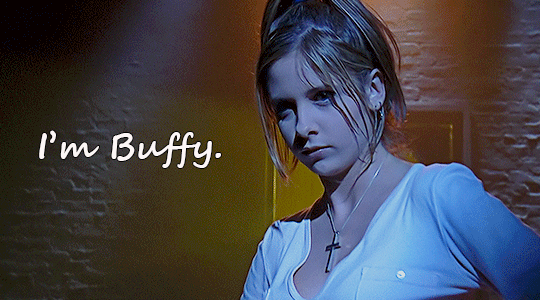
Central to the series is Buffy herself, played by Sarah Michelle Gellar. Starting as a child actor, Gellar had moved onto a successful regular role on teen soap Swans Crossing in 1992, before appearing in a succession of horror productions in 1997: I Know What You Did Last Summer, Scream 2 and Buffy itself. As the lead of the series, Gellar had a difficult balancing act. The series opens without an origin story, with Buffy arriving in the L.A. suburb of Sunnydale having been kicked out of her last school due to the catastrophic consequences of her vampire slaying activities. (The events of the film are, largely, the backstory of Buffy of the series, but with several differences that were more in line with Whedon's earlier scripts, and knowledge of the film is in no way necessary to enjoy the series.) She had to convince as a formerly popular, characteristically shallow teen who had gained new depths as a result of her experiences, who was both vulnerable and exceedingly powerful, likeable and friendly but shouldering an incredible burden. Buffy is witty, highly intelligent, but not academically brilliant and both youthfully naïve and with a wisdom gained from her unique experiences. Gellar really doesn't get enough credit for how well she balanced all these elements and made Buffy into a complex and believable lead. While Buffy is always an ensemble show, she shoulders the weight of it, particularly in the first season.
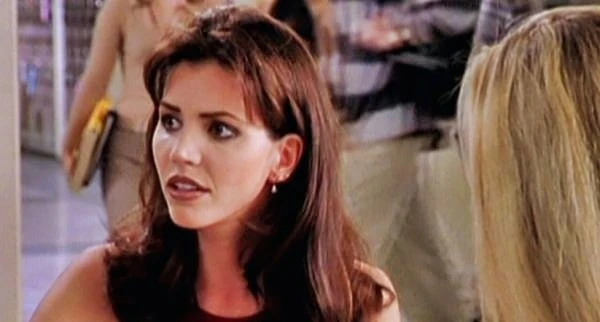
Buffy, though, is only one of many Sunnydale students who, we are supposed to believe, are only sixteen. In true American TV style, these students are divided into two main groups: the popular kids, which is to say a cast of extremely beautiful actors in their twenties; and the social outcasts, who are equally beautiful actors in their twenties but with less fashionable clothes and hairstyles. While this is common in teen films and series, it's often hard to swallow, and while sometimes it's hard to shake off the clear fact that some of these kids are rapidly approaching their thirties, the main cast are all strong enough actors to pull off their teen characters. (Of the main and recurring cast, only two were actually in their teens when they started filming. Gellar was nineteen, while Mercedes McNab, who played recurring popular girl Harmony from episode two, "The Harvest," was actually sixteen.) In the first episode, Buffy is initially befriended by Cordelia Chase, the queen of the school. Played by Charisma Carpenter (actually twenty-six when filming began, the oldest of the "teen" characters), Cordelia is the archetypal shallow Valley Girl, a cheerleader obsessed with fashion, popularity and wealth. She represents who Buffy used to be (it's perhaps unsurprising, then, that Gellar and Carpenter initially auditioned for each other's roles). Pushed as only second to Buffy in the regular cast in early publicity, some of the earlier episodes struggle to find anything for Cordelia to do except stride into shot to deliver a catty insult (she does get all the best lines). However, Cordelia is like Buffy in more ways than either of them realise and gradually reveals hidden depths, beyond her self-obsessed outward character. By the end of the first season, she has taken her first tentative steps into becoming one of the heroes.

Buffy quickly falls in with the more genuine and accepting geeky trio of Willow, Xander and Jesse. These three are inseparable best friends, until poor Jesse (Eric Balfour, later of 24, Haven and Six Feet Under) is, in the second episode, transformed into a vampire and then killed. He is never mentioned again. Willow and Xander fare better, becoming Buffy's two best friends from here on out, drawn into the world of vampires and part of her "Scooby Gang" – the chosen few who know about Buffy's identity as the Slayer. Alyson Hannigan makes Willow almost impossibly likeable, a sweet, intelligent yet painfully shy girl who slowly comes out of her shell as the series progresses. Nicholas Brendon, in spite of being a broad-shouldered, handsome and athletic man, manages to convince the audience that he's a weedy sixteen-year-old. Often comic relief, Xander hides his lack of confidence behind humour, and is immediately besotted with Buffy – and apparently unaware of how besotted Willow is with him. Willow and Xander are, along with Buffy, the only characters who appear throughout the entire series – Xander is absent for only a single episode in the show's final season, while the two girls appear in every instalment.
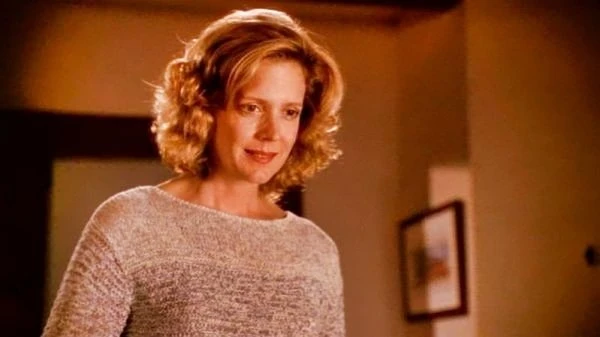
Also appearing from the first episode are Buffy's parent figures. Her mother, Joyce Summers, played with understated skill by Christine Sutherland (Honey I Shrunk the Kids), provides a spine of normality in Buffy's life, although her blindness to what's really going in the first season becomes frustrating. Having been left by her husband, Joyce's struggles as a single parent in a new town are hinted at but sadly unexplored in the early episodes, which treat her more as an obstacle to sneak past than anything more three-dimensional. The role of Buffy's father figure is filled by Rupert Giles, her Watcher – essentially the Slayer's handler, teacher and trainer. Anthony Stewart Head, although a fairly prolific stage and television actor in Britain, was best known at the time on both sides of the Atlantic for his role in the serialised Nescafe/Taster's Choice coffee adverts. Everyone's favourite school librarian/occult mystic, Giles provides Buffy and her friends with guidance and frustration in equal measure. Absurdly stuffy, twittery and tweedy in these early episodes, it only becomes clear later that much of this is a front. Even in his early, buttoned-up character, Head is wonderfully charming as Giles.
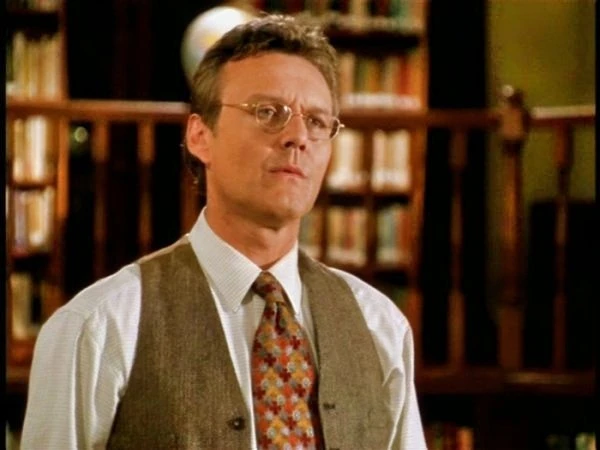
That's the human cast taken care of, but Buffy has always been just as much about the monsters. The central conceit of the series is both simple and clever: high school is hell. While the strength of the series is that it grew up with its audience, to begin with it was clearly about using horror movie tropes to explore the tough day-to-day trials of adolescence. The series boasted a mix of old-fashioned horror story clichés and absolutely up-to-date high school comedy-drama, perfectly encapsulated by Nerf Herder's spectacular spooky pop rock theme tune. Supporting this was a well-developed mythology, cultivated from popular vampire lore of the twentieth century with a heavy dose of Lovecraftian primeval horror. In Buffy, vampires display many of the traits we would expect, mostly taken from Dracula and its many cinematic descendants: killed by sunlight or a wooden stake through the heart, unable to enter a home without invitation, and so on. However, their origin is quite unique, being in this world dead bodies inhabited by formless demons, the remnants of a primordial race of gigantic monsters that once ruled the Earth. While they can appear as humans most of the time, when they are hurt, angry or ready to feed, the vampire's true, bat-like face is revealed (a make-up design clearly influenced by the 1987 film The Lost Boys, one of Buffy's clearest ancestors).
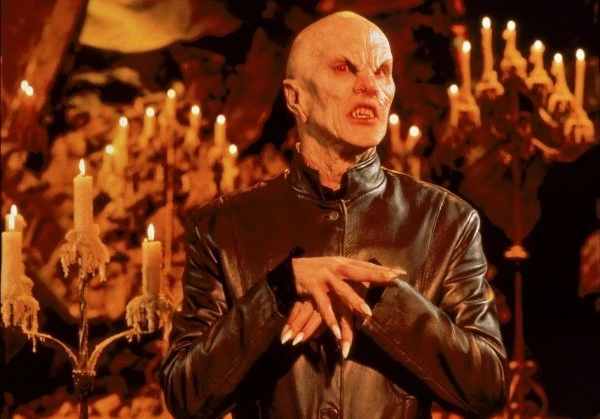
The vampires, in the first season, are ritualistic and ruled by the Master, a vampire older than any other known - so old, he can no longer retain any human face, instead appearing as a deathly pale, bald Nosferatu-like ghoul with a blood-stained muzzle. Played with wonderfully camp aplomb by Mark Metcalf (Animal House), the Master is urbane but vicious and tremendously powerful. His overriding goal is to escape from his self-made prison beneath Sunnydale and to open the Hellmouth, a rift between the mortal world and the demon dimensions that will bring about the end of the world and the extinction of humanity. (What the Master and his followers think they will eat after this is anyone's guess.) The Hellmouth is a source of constant mystical energy, providing a handwave for the many bizarre goings-on in the series, without having to provide too much in the way of explanation. The Master is assisted by an army of vampires, the most significant of whom is, at first, Darla. Played by Julie Benz, Darla has the honour of being the very first vampire seen in the series (that blonde girl in the opening scene), but sadly she doesn't get much character in her few appearances. Darla's importance, though, is in the origins of another character, for while she was turned into a vampire (sired in the series' parlance) by the Master, she in turned sired one of the most important characters in the series, Angel.
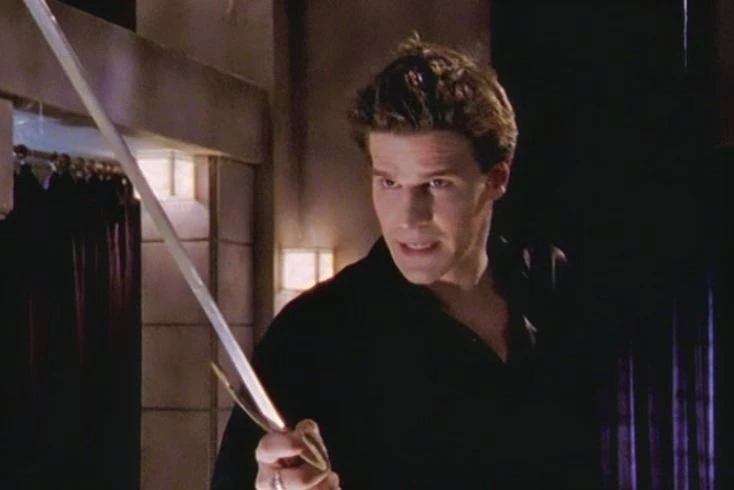
Played by David Boreanaz, Angel appears from the very first episode as a mysterious and shadowy figure who is seemingly committed to killing vampires. His stalker-ish behaviour, though, is disquieting enough, even before the revelation in episode seven, the eponymously titled "Angel," that he is also a vampire. It is revealed that as Angelus he was a particularly brutal monster, that made even other vampires shiver, but was cursed with his human soul, and has spent a century or so suffering with the guilt of everything terrible he has done. From the moment we meet him, it's clear that there will be a romantic subplot between him and Buffy, purely because that's how these stories go, and once it's become the forbidden love of two people on opposite sides of an endless battle, it's a foregone conclusion they'll get together. However, there's really very little chemistry between Gellar and Boreanaz, and Angel himself is rather dull, more interesting as a concept than a character. In an inversion of the usual way of things, his purpose is to provide the female lead with a love interest and a source of angst. Angel doesn't really develop his own character until he gets to be the hero of his own show.
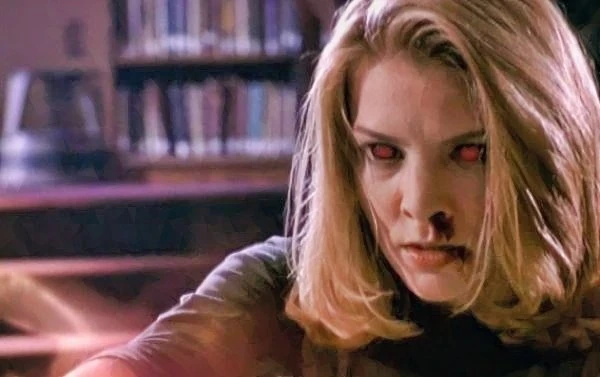
As it started part way through the 1997 television season, Buffy's first run only had twelve episodes, but in those episodes, the series covered a lot of ground. After the opening two-parter comes the straightforwardly titled "Witch," which sees cheerleader auditions derailed by witchcraft. Introducing the occasional character of Amy Madison (Elizabeth Anne Allen), "Witch" explores the pressure that parents can put on their children to live up to their expectations, which parallels the pressure Buffy is put under throughout the season. Episode five, "Never Kill a Boy on a First Date," explores the challenge Buffy faces in balancing her desire for a normal social life and her duties as the Slayer, also introducing the Anointed One, the Master's new right-hand vampire - in classic horror movie tradition, a creepy child.
Episodes four and six focus on Xander, and the challenges that boys face when navigating adolescence. "Teacher's Pet" is a very silly episode in which a new substitute teacher turns put to be a giant "she-mantis," a human-sized insect that preys on virgin boys, but has something to say about the pressures boys face to be sexual and manly from a young age. "The Pack" explores bullying and the attraction of "the wrong crowd," when Xander and a bunch of troublesome students are possessed by hyena spirits. It sees the last appearance of Ken Lerner as Principle Flutie, around about lunchtime.
Episode eight, "I, Robot... You, Jane" features the series' first full-on demon in a story that details an early look at the risks of internet dating. A Willow-focused episode, it sees her fall for a boy in an online chatroom, only to find out later that he is the spirit of Moloch the Corruptor, who was trapped in a grimoire centuries earlier and accidentally scanned onto the internet. It's tremendously dated now, with Giles's technophobic reaction to the IT systems almost as funny as the obsessive characterisation of the one-off computer nerd characters. It does, however, introduce Robia LaMorte as computer science teacher Jenny Calender (only a fortnight older than her supposed student Charisma Carpenter). As well as being a delight to watch in all her scenes, Jenny provides Giles with a well-deserved love interest and will prove to be hugely important later on, even if being a "techno-pagan" is the most nineties thing I've ever heard. Still, it was 1997. The World Wide Web was only four.
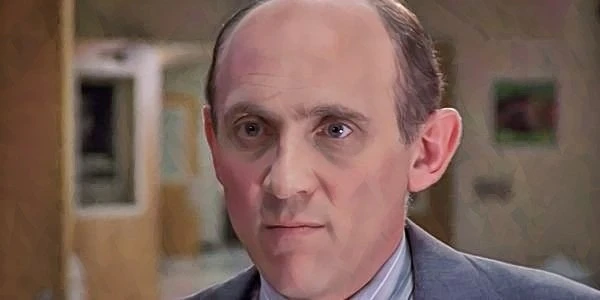
Episode nine, "The Puppet Show," is one of the better of the first season. Cleverly using horror clichés to play with viewer expectations, it keeps adding twists as it goes, and features a wonderful voice performance by Tom Wyner as Sid the Dummy. However, it will be best remembered for introducing Armin Shimerman (otherwise best known as Quark on Star Trek: Deep Space Nine) as Principle Snyder, the vindictive new head of the school and a running antagonist for the next two seasons. Episode ten, "Nightmares," is perhaps the best of the season, featuring some genuinely unsettling imagery as a comatose young boy brings people's nightmares to life. As well as giving us an early face-off between Buffy and the Master (and even briefly turning Buffy into a vampire), it explores the neuroses of our main characters and even has some important things to say about bullying and abuse. Episode eleven, "Out of Mind, Out of Sight," features a pre-fame Clea DuVall (The Faculty, Heroes, The Handmaid's Tale) as Marcy Ross, a girl cursed with invisibility after years of being ignored by her fellow students. With some pertinent things to say about the harsh realities of school life, it also sees the beginnings of Cordelia's development into a more compassionate character. It ends on a great twist scene as well, which is surprisingly never followed up.
The season ends with "Prophecy Girl" which wraps the Buffy/Master storyline up with style. Giles and Angel together decipher a text that predicts Buffy will die facing the Master who will imminently escape from his prison. It brings to a head the mounting pressure on Buffy in her role as the Slayer, the unfairness of her being the Chosen One and her fight against her lack of agency. She eventually commits to her fate, facing the Master and indeed dying by his hand, her blood being the very thing he needs to allow his escape. However, her actual cause of death is by drowning, and Xander, in a fine hero moment, is able to revive her. This has huge consequences for the series going forward, but for now, it lets Buffy face the Master on more even terms and thoroughly kick his ass.
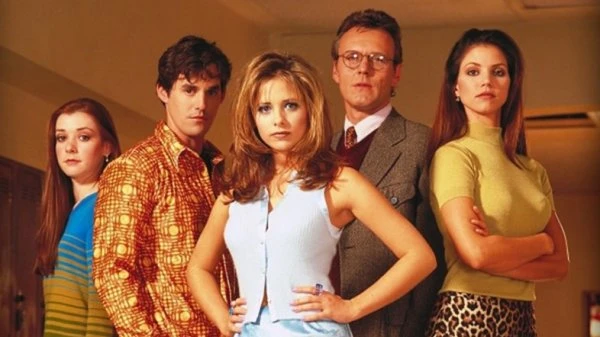
The first season of Buffy is clearly a work in progress. There's the sense that production was a bit seat-of-the-pants, with virtually no money for sets. Only the library and some interior school locations, Buffy's bedroom and the Master's underground lair (ironically a sunken church) were standing sets. The Bronze, the frequently visited club that would feature many unsigned (and occasionally even famous and established) bands, was a hastily dressed studio lot. The remainder of the series was shot almost entirely on location, including in and around Torrance High School and in various L.A. locations. Casting was canny, with many of the actors who tried for Buffy getting other roles in the season (including Julie Benz, Elizabeth Anne Allen and Mercedes McNab). Boreanaz and Brendon had little acting experience before auditioning for the roles of Angel and Xander, with the producers of the series taking a chance on new talent, something that clearly paid off for the series. The direction, on the other hand, is pretty shaky in the first season, and there's a tendency for the more atmospheric scenes to be so underlit as to be impenetrable. Nonetheless, the writing, largely by Whedon himself and David Greenwalt, holds the series together, with strong characters delivering clever dialogue in their own unique style giving the series a strong identity from the outset. While the first season is far from the best of the show, it's a solid and tremendously entertaining start for the Slayer.
Review: Daniel Tessier
Dan describes himself as a geek. Skinny white guy. Older than he looks. Younger than he feels. Reads, watches, plays and writes. Has been compared to the third, fourth, fifth, sixth, seventh, eighth, tenth, eleventh and twelfth Doctors, and the Dream Lord. Plus Dr. Smith from 'Lost in Space.' He has also had a short story published in Master Pieces: Misadventures in Space and Time a charity anthology about the renegade Time Lord.
Dan's web page can be here: Immaterial
Published on March 17th, 2021. Written by Daniel Tessier for Television Heaven.



